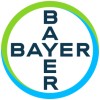
HIV-1 Infection Study of Once a Day Versus Twice a Day Protease Inhibitor in Antiretroviral Treatment...
InfectionHuman Immunodeficiency Virus I1 moreThis is a Phase IIIB, 48 Week, multicentre, randomized, open-label, parallel group study comparing the safety and efficacy of fosamprenavir plus ritonavir 1400mg/100mg once-daily to fosamprenavir plus ritonavir 700mg/100mg twice-daily, both administered with abacavir/lamivudine 600mg/300mg once-daily in antiretroviral-naive HIV-1 infected adults. This study utilizes a group-sequential design with two stages: 1) an interim 24 week cohort analysis of approximately 200 subjects and 2) if study continuation criteria are met at this interim analysis, further enrolment of an additional 528 subjects, followed over a minimum of 48 weeks. The objectives of the study are to demonstrate 1) non-inferior antiviral activity of fosamprenavir/ritonavir 1400mg/100mg QD compared to fosamprenavir/ritonavir 700mg/100mg BID and 2) a superior fasting non-HDL lipid profile in subjects receiving fosamprenavir/ritonavir 1400mg/100mg QD.

Induction/Simplification With Atazanavir + Ritonavir + Abacavir/Lamivudine Fixed-Dose Combination...
InfectionHuman Immunodeficiency Virus I1 moreThis study was designed to test the efficacy, safety, tolerability and durability of the antiviral response between atazanavir (ATV) + ritonavir (/r) + abacavir/lamivudine(ABC/3TC) Fixed dose combination (FDC) each administered once daily (QD) for 36 weeks followed by randomization to either a simplification regimen of ATV or continuation of ATV +/r for an additional 48 weeks, each in combination with ABC/3TC in antiretroviral (ART)-naive, HIV-1 infected, HLA-B*5701 negative subjects. All subjects who complete the 84-week study will be eligible to enter the treatment extension phase and continue for an additional 60 weeks. The purpose of this extension is to obtain longer term treatment data in subjects who have completed the 84-week study.

Therapy of Complicated Intra-Abdominal Infections With Moxifloxacin or Ertapenem
InfectionA study to compare the safety and efficacy of moxifloxacin to ertapenem in patients with intra-abdominal infections.

Monotherapy Versus Placebo Over 10 Days in Integrase Naive HIV-1 Infected Adults
InfectionHuman Immunodeficiency Virus1 moreTo investigate safety, tolerability and anti-viral activity in Integrase-Naïve HIV-1 infected adults

A Comparative Phase IV Study Evaluating Efficacy & Safety Of Magnex(Cefoperazone-Sulbactam) In Intraabdominal...
InfectionIntra-abdominal infections are often polymicrobial, and include aerobic as well as anaerobic bacteria. Antibiotics used in intra-abdominal infections should aim to cover organisms such as Enterobacteriaceae and Bacteroides fragilis, which are the commonest organisms known to cause such infections. Combinations of a third-generation cephalosporin, an aminoglycoside and metronidazole are often used to treat such infections in surgical settings. An alternative to such combinations is the use of a beta lactam - beta lactamase inhibitor combination. Magnex (cefoperazone- sulbactam) is one such combination, which has been shown to be as effective as a standard multidrug regimen such as gentamicin and clindamycin in the management of intra-abdominal infections. The combination of ceftazidime, amikacin and metronidazole has been chosen as a comparator regimen because of its broad coverage of Gram-negative and anaerobic organisms found in such conditions.

Coated Endotracheal Tube and Mucus Shaver to Prevent Hospital-Acquired Infections
InfectionThis study, conducted at the San Gerardo Hospital in Milan, Italy, will examine whether a bacteriocidal-coated endotracheal tube (breathing tube) cleaned with a device called a Mucus Shaver is safe and effective in preventing hospital-acquired infections in patients who require prolonged mechanical ventilation in an intensive care unit (ICU). Pneumonia is the most frequent hospital-acquired infection in the ICU; its development is likely related to the use of a breathing tube. The tube is placed in the patient's trachea (windpipe) to assist breathing during and after an operation. Currently, breathing tubes in intubated patients are cleaned with a suction catheter that draws out secretions that accumulate in the tube. This method does not clean the tube completely, however, and within a few hours after the breathing tube is placed, bacteria may begin to grow inside the tube. Over time, as the patient breathes in and out through the tube, the bacteria may break free and enter the lungs, possibly causing pneumonia. In addition, the growth of bacteria in the tube decreases the size of the airway passage, making it more difficult to keep air moving in and out of the lungs. Previous studies have shown that breathing tubes coated with silver-sulfadiazine prevented bacterial growth in the patient's airways and that use of the Mucus Shaver prevented accumulation of secretions in the lumen of the breathing tube, keeping the tube open. This study will determine if use of the coated tube and Mucus Shaver in patients requiring prolonged mechanical ventilation is safe and if it can reduce bacterial growth, the length of intubation and mechanical ventilation, the occurrence of pneumonia and the length of time in ICU and hospital. Patients at San Gerardo Hospital who are 18 and older, who expect to have a breathing tube in place for more than 48 hours, and who are not allergic to silver-sulfadiazine may be eligible for this study. Participants are randomly assigned to have either a standard breathing tube and standard cleaning or a coated tube cleaned with a Mucus Shaver. At intubation, a sample of secretions is collected from the mouth, the lumen of the breathing tube, and the airways. The lumen of the breathing tube is then cultured every day. When the tube is removed, or on the eighth day of intubation, a sample of secretions is collected from the mouth, the lumen of the breathing tube, and the airways. After the tube is removed, it is examined for biological and microscopic analysis.

N-acetylcysteine in Intra-amniotic Infection/Inflammation
LaborPremature4 moreThe aim of the study is to determine if N-acetylcysteine (a potent free radical scavenger) prevents the occurrence of adverse neonatal outcomes in preterm deliveries complicated by infection associated with preterm labor or preterm premature rupture of membranes (PPROM). The working hypothesis is that in pregnancies complicated by intra-amniotic infection or inflammation, N-acetylcysteine protects the fetus by preventing the development, or decreasing the intensity and/or progression of the fetal inflammatory syndrome.

Effective Antibiotic Treatment of MRSA
Skin DiseasesInfectiousTo evaluate the effective duration (in days) to clinical improvement of outpatient antibiotic regimens in the treatment of superficial abscesses caused by MRSA in patients that present to the emergency department.

Oral Antibiotic Treatment at Home Instead of Intravenous Treatment in Hospital for Resistant Gram...
Gram-positive Bacterial InfectionsStaphylococcal InfectionsThe main purpose of this study is to find out whether changing the hospital policy to allow switch from glycopeptide antibiotics (given by intravenous drip), to an equally effective oral antibiotic (linezolid) will enable patients who are otherwise well enough to be discharged from hospital sooner. The secondary objectives are To identify those patients who could potentially be discharged on an oral agent from those being treated with a glycopeptide, thus helping target this approach most effectively To evaluate the cost involved and compare this with the costs that would have taken place if use of an oral agent and discharge had not occurred.

Antibiotic Treatment for Infections of Short Term In-dwelling Vascular Catheters Due to Gram Positive...
Bacterial InfectionsGram-Positive Bacterial Infections1 moreThis study will treat patients who have a short term central catheter that is thought to be infected with a specific bacteria (gram positive bacteria)
